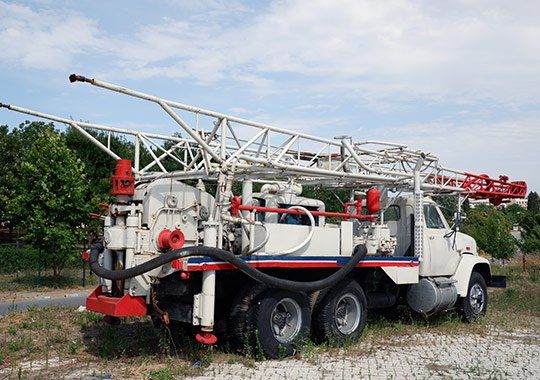Did you know that more than 40% of Virginia's population depends on wells or springs as a source of drinking water and this dependence is close to 100% in rural areas? Furthermore, approximately one-fourth of all Virginia households rely on an individual water supply system, such as a backyard well or spring. At Dowdy’s Well & Septic Service, we install and service drilled wells throughout Richmond, VA, and the surrounding areas. Contact our knowledgeable team today to learn more! Call
(804) 795-1105.

Preventing Groundwater Contamination
Even though over 40% still rely on wells or springs as a source of drinking water, each should be designed and managed to provide clean water. If improperly constructed or maintained, however, they can allow bacteria, pesticides, fertilizers, or petroleum products to contaminate groundwater. These contaminates can put human and animal health at risk. Preventing groundwater contamination is very important. Once groundwater is contaminated, it is very difficult, if not impossible, to restore to its original condition. Most options are costly and could involve expensive treatment of the water or obtaining another source of drinking water. Groundwater contamination that affects your own well can also affect your neighbors' wells.
Title 32.1 of the Code of Virginia provides that the State Board of Health has the duty to protect the public health and to ensure that groundwater resources and drinking water supplies are not adversely affected by the construction and location of private wells. Private wells are regulated by Private Well Regulations (VR 355-34-100). There are no state-wide regulations regarding springs as individual water sources, and their use is generally discouraged by public health personnel.
Virginia regulation requires that Class IIIA wells (see footnotes in Table 1) be cased to a depth of at least 100 ft and Class IIIB wells be cased to a depth of 50 ft. Class IIIC wells should be cased to a minimum depth of 20 ft or no less than one foot into bedrock when bedrock is encountered at a depth of less than 20 ft. When in collapsing material, the casing shall terminate in the aquifer but in no instance be less than 20 ft.
Water Testing
Keep an eye on water quality in existing wells by testing the water periodically. Although you cannot have your water tested for every possible pollutant, some basic tests can indicate whether a problem exists. At a minimum, test your water as often as once a year for bacteria and nitrates. Where the well draws from sandy materials or bedrock, testing once for corrosivity is also important. A good initial set of tests for a private well includes, in addition to bacteria and nitrate, hardness, pH, conductivity or total dissolved solids, and chloride. A visual examination of the water, as well as taste and odor, can provide valuable clues about possible contamination. Dowdy's Well & Septic Service does NOT test your water, please call your county department for certified laboratories that do test water. You should particularly consider testing your drinking water if:
You can seek further advice on appropriate tests to run from your county extension office or health department. You can have your water tested by private laboratories.
More On Drilled Wells
Precipitation is the source of drinking water withdrawn from the ground. Water wells are drilled into the ground to a depth at which water can be withdrawn from areas within the soil or bedrock where good water is found in sufficient quantity. These areas or layers are known as "aquifers." Drilled wells are normally less than a foot in diameter and are constructed by drilling a hole a few hundred feet in the ground to a deeper source of water. In the eastern portion of the county, the well is drilled into a confined aquifer and screens are placed in the well opposite the water zones.
A "gravel" pack of coarse sand is usually placed around the screened area to prevent sand from the aquifer from entering the well. In the western portion of the county, the well is drilled into the bedrock, usually granite, until a fracture zone with a suitable amount of water, ideally more than 5 gallons per minute, is encountered. Often it is not necessary to screen these areas so the well can be cased to a point just below the top of the bedrock. In both types of drilled well grout is injected to a point where the well is in impermeable material so that the well is protected from surface contamination.
There are all types of wells in our county.
Some very old wells are known as "dug" wells because they were constructed by digging a hole to water and lining that hole with brick or other building material. These wells are extremely susceptible to contamination and should be taken out of service.
Call Dowdy's Well & Septic Service at (804) 795-1105 to have your old well replaced.
